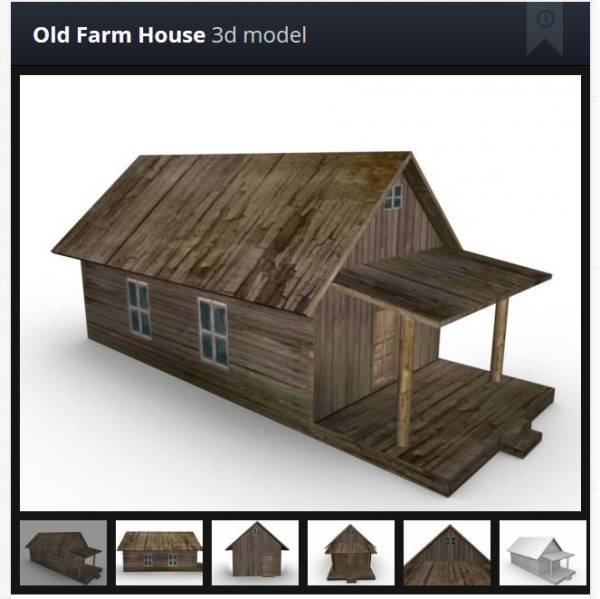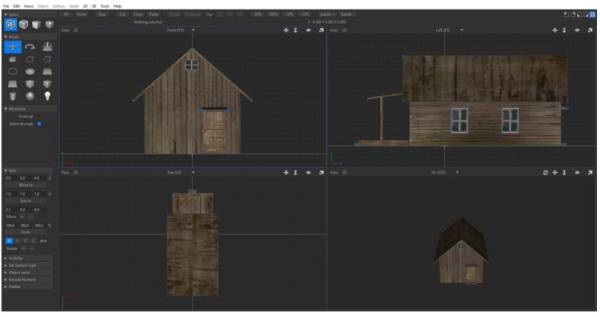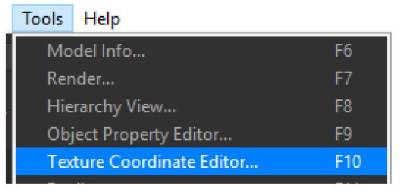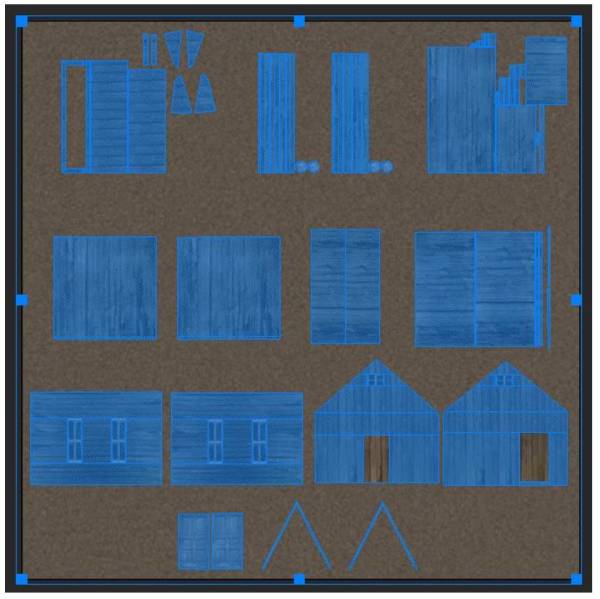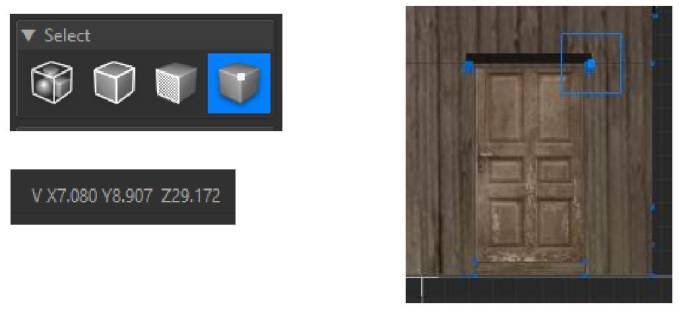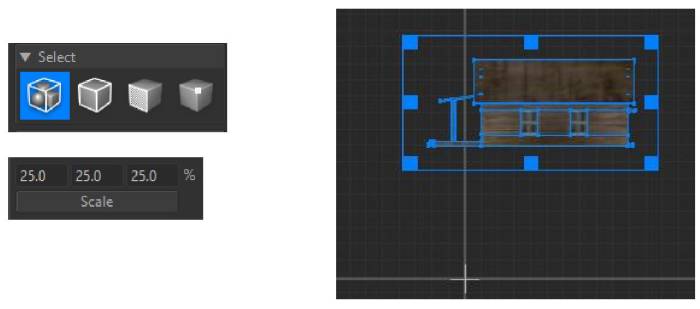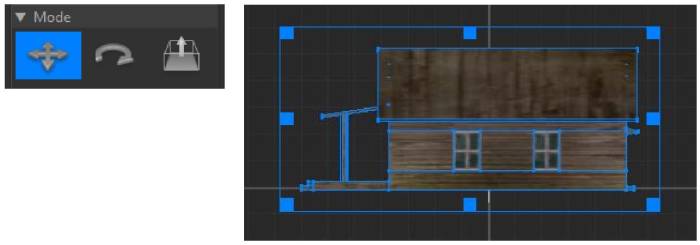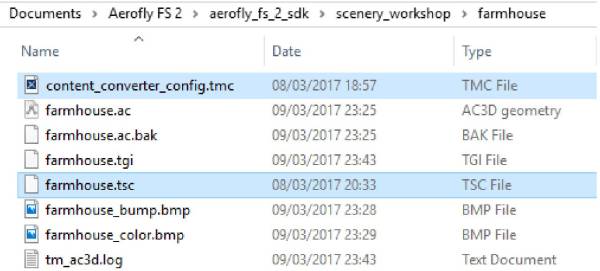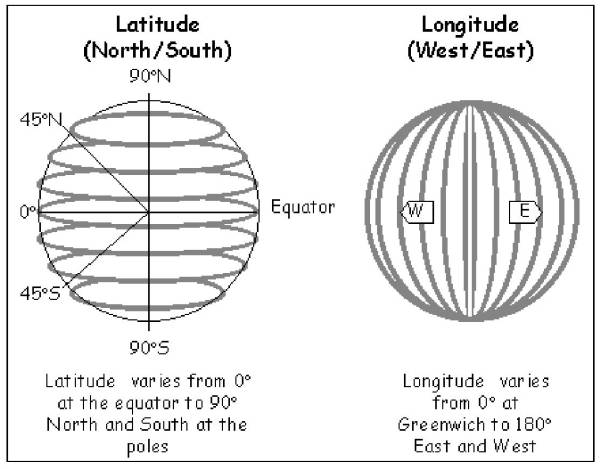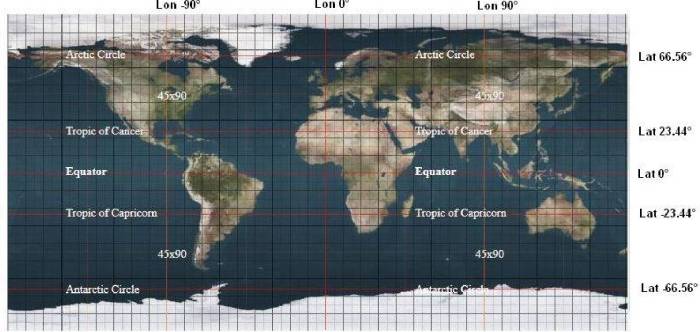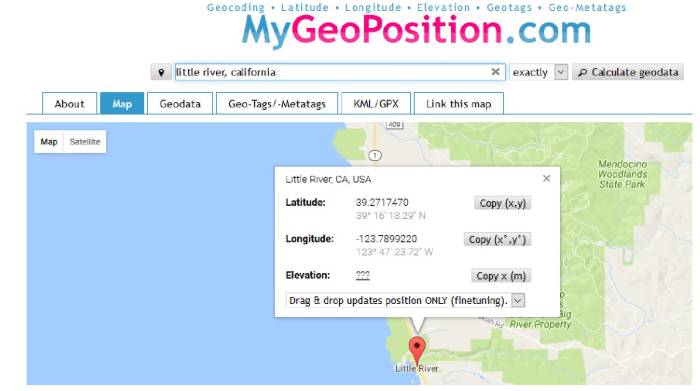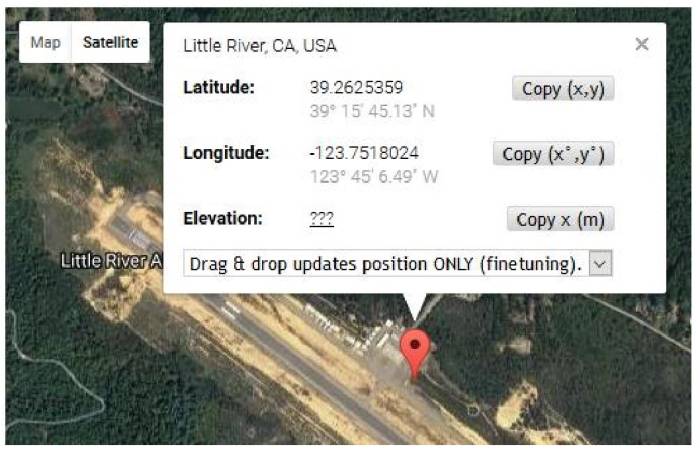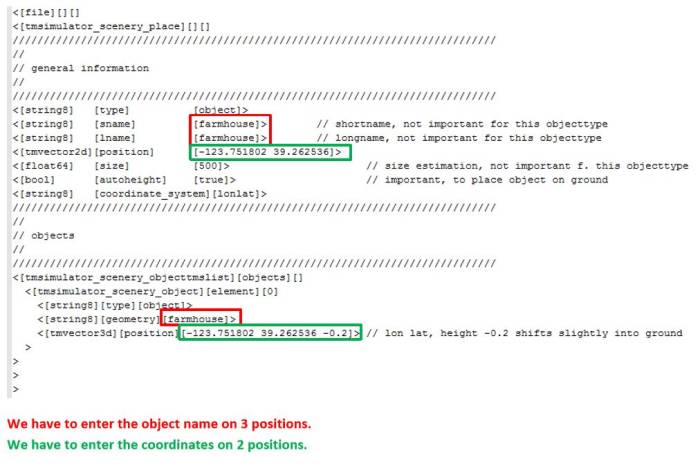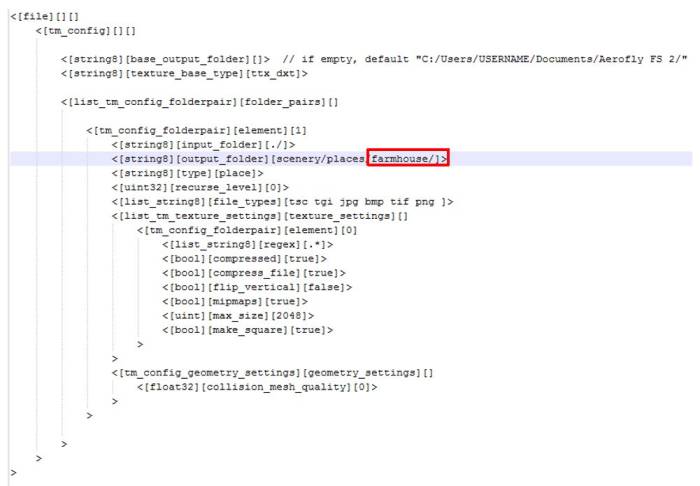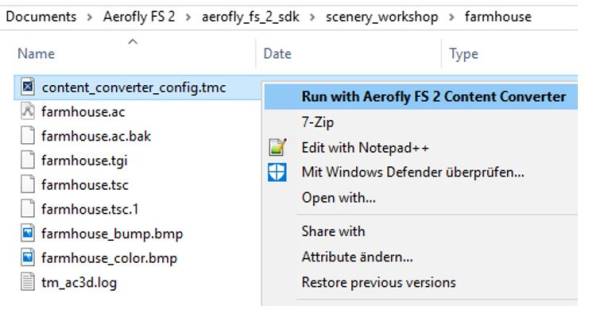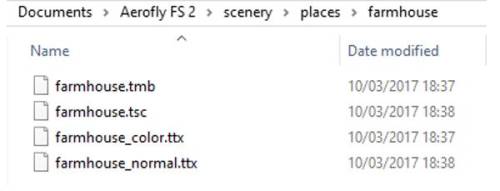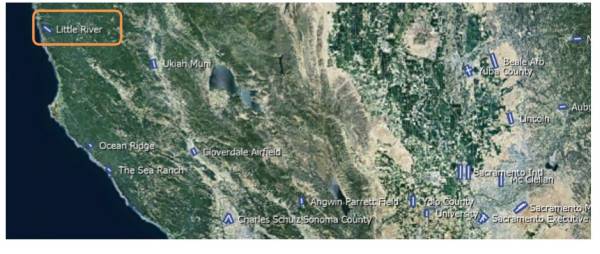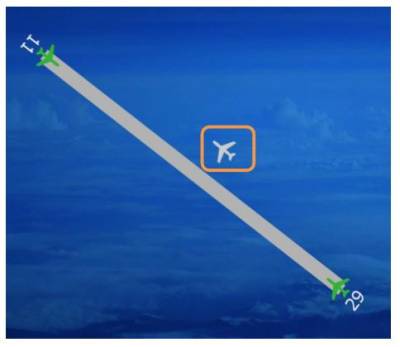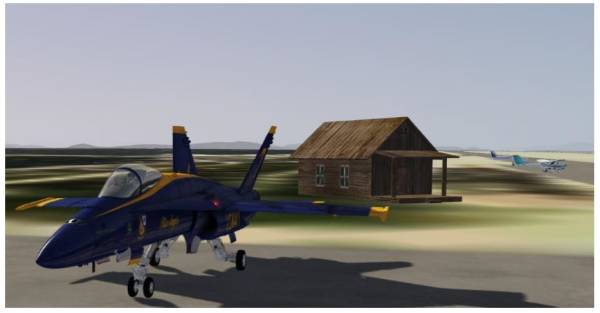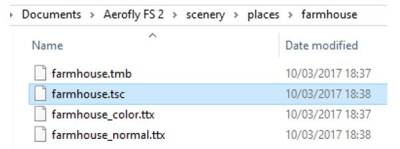This is an old revision of the document!
Table of Contents
Adding Scenery Objects
Are you interested in importing objects into Aerofly FS 2 scenery? This is how you do it. Use this tutorial for creating your own objects as well! Let's get started.
Prerequisites:
- Aerofly SDK Package - Download it from https://www.aerofly.com/aerofly_fs_2/sdk/
- A supported 3D modelling software with *.tgi exporter, in this tutorial we used AC3D 8.0.50a
In this example we will use a small farmhouse. Download the farmhouse here: http://tf3dm.com/3d-model/old-farm-house-91130.html Be sure to give credits to the author.
We will also need the OBJ importer plugin for AC3D. You can download the plugin here: http://www.inivis.com/forum/showpost.php?p=31428&postcount=3
- Unzip obj_import.zip to any location.
- Move the obj_import.p file to the appropriate directory of AC3D. Note The common location is: C:\Program Files (x86)\AC3D 8.0.50a\plugins
The SDK package comes with an IPACS export plugin for AC3D.
- Copy the ipacs_ac3d_to_tgi.p file to the appropriate directory of AC3D. Note The common location is: C:\Program Files (x86)\AC3D 8.0.50a\plugins
Preparing the texture files:
- Unzip 2l9281qs868w-Model.zip to any location.
- Now start any graphics program and open the file Farmhouse Texture.jpg and save it as BMP with the file name farmhouse_color.bmp.
- Open the file Farmhouse Texture Bump.jpg as well and save it as farmhouse_bump.bmp.
- Move both BMP files to your destination directory of the SDK scenery_workshop. In my case this is: \Documents\Aerofly FS 2\aerofly_fs_2_sdk\scenery_workshop\farmhouse.
Use AC3D:
- Start AC3D and select the function File –Import : Farmhouse OBJ.obj Note You may get an error message “Can’t open mtl file ‘Farmhouse’ for reading, default material will be used.” Just go on with import.
- Next save file as: farmhouse.ac to the folder: \Documents\Aerofly FS 2\aerofly_fs_2_sdk\scenery_workshop\farmhouse.
- Reattach the BMP texture file to the 3D model. Object – Texture – Load texture: Select the farmhouse_color.bmp in our destination directory \Documents\Aerofly FS 2\aerofly_fs_2_sdk\scenery_workshop\farmhouse
The result is immediately visible.
Control the texture fitting by selecting all, then Tools – Texture Coordinate Editor (or just F10).
This image shows, that the texture position is still correct.
We have to calculate the size of the object. Select Vertex , click to the vertex point above the door and note the coordinate values.
Aerofly FS 2 uses metric measurements. This means, the height of the door is now 8.907 meters. We will scale it to 25% for a realistic door height. Select the whole model and set scale to 25%. Note: 1 meter = 1.09361 yards.
Next we shift the whole model back to the ground line.
Save your file again, then use the export function. File – Export – Ipacs TGI files (.tgi) Enter the name farmhouse and select again our destination directory \Documents\Aerofly FS 2\aerofly_fs_2_sdk\scenery_workshop\farmhouse
Notes
- Please use for your file names only small characters without blanks (IPACS suggests this to avoid problems with cross platform data transfer).
- The BMP files have to be squares as in our example (If this is not the case, you have to create a square and perhaps remap the texture position).
- The BMP file requires the addition _color.bmp for the texture file.
You will need 2 more files: content_converter_config.tmc and a farmhouse.tsc file. Copy them to the directory. This is the final content of our directory.
Before you run the final conversion, You will have to calculate the position.
Excursion to geographic coordinates
If you want to describe any position on earth in a unified system you may use geographic coordinates (as Aerofly FS 2 does). We need 360 degrees to do a full circle, so the earth simplified as a bowl consists of 360 longitude lines. Longitude 0 is defined through Greenwich, negative to the west and positive to the east. They meet again at the opposite side of the earth at -180/+180 degrees. It is half of a circle going from north pole to south pole. So lat +90 is the north pole, 0 is the equator line, -90 is the south pole.
Note - Make sure that you take the sequence into account: Both ways Lat/Lon and Lon/Lat are common. (Aerofly FS 2 uses Lon/Lat).
- If you want to place an object at a certain position you may use this page for calculations: http://en.mygeoposition.com/
- Search for Little River, California. We get the first approach to our target position.
It displays Google map worldwide, so we can move and zoom into our desired position. Switch to Satellite, then click with the mouse to the favored point. This opens a window with the appropriate coordinates.
Open the file farmhouse.tsc with a text editor.
Note - Please compare the values with the coordinates from mygeoposition. You have to change the order of the coordinates, and it's restricted the input to 6 positions after decimal point.
Open the file content_converter_config.tmc with a text editor. Note - You will have to enter the object only once.
Last step: Run the converter. Click file with right mouse button, select Aerofly FS 2 Content Converter
Do not interrupt the black shell window. After the process is finished, the tm.log documents the result of the conversion. Now there is a new subfolder farmhouse in the scenery places.
Start aerofly FS 2, open Location menu, move the map to the north of San Francisco. Select the airfield Little River
Select the park position in the middle of the runway.
The position fits very well to our selection in mygeoposition. Be careful not to burn down the farmhouse with your afterburner.
Important notes:
- Rotation of the object has yet to be done in the 3D model. IPACS is aware of this.
- You can display coordinates inaerofly FS 2 by Strg – F1.
- It shows only 2 decimal places, IPACS may provide another tool for coordinate readout in future version.
- You can fine tune the coordinates in the resulting file farmhouse.tsc without need for new conversion.

